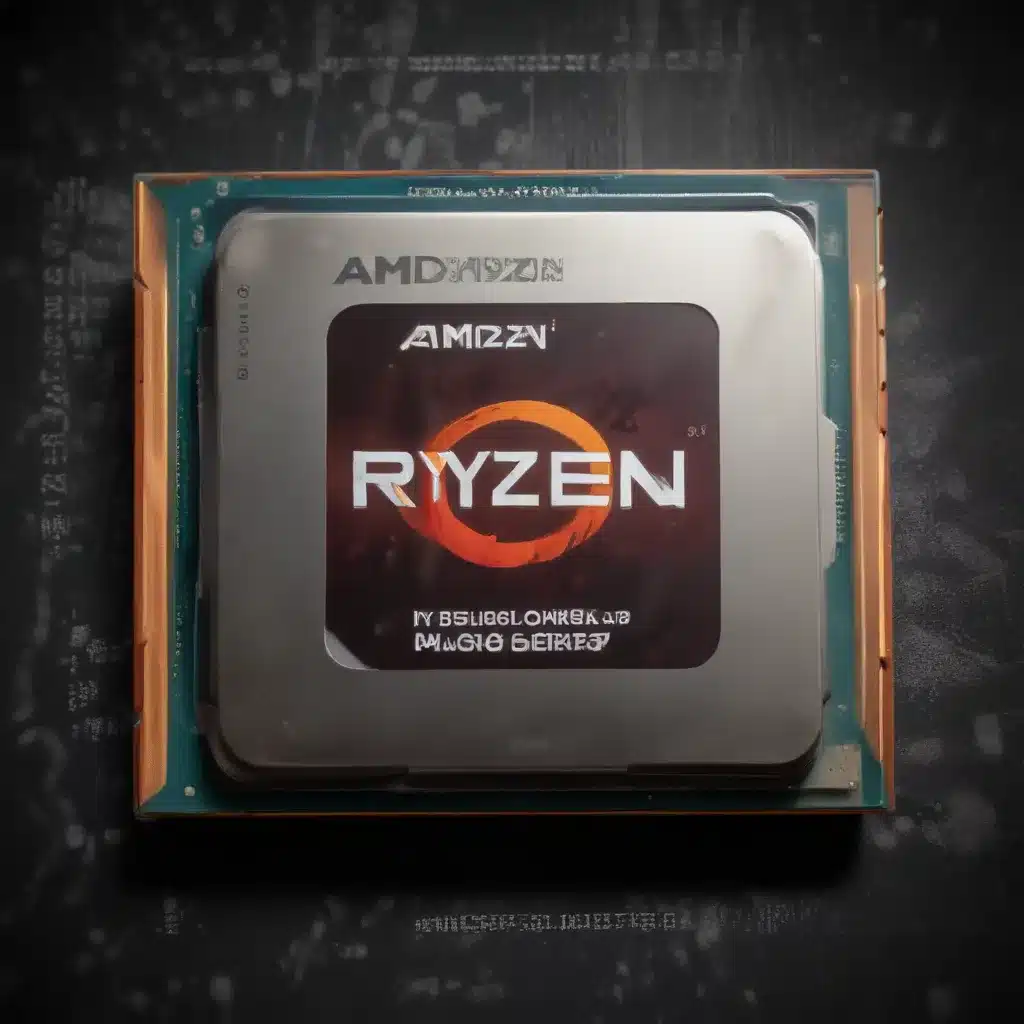
The battle for desktop CPU supremacy is heating up as AMD and Intel unleash their latest and greatest silicon. In one corner, we have AMD’s Ryzen 7000 Series, armed with the cutting-edge Zen 4 architecture. In the other, Intel’s Raptor Lake, the latest evolution of the company’s hybrid chip design. So, which next-gen CPU reigns supreme?
CPU Architectures
AMD Ryzen 7000 Series
The Ryzen 7000 Series is built upon AMD’s Zen 4 microarchitecture, fabricated on the cutting-edge 5nm process node. This allows for significant core count and clock speed increases compared to the previous Zen 3-based Ryzen 5000 chips.
The flagship Ryzen 9 7950X packs a whopping 16 cores and 32 threads, with a blistering max boost clock of 5.7GHz. The entire Ryzen 7000 lineup offers core counts ranging from 6 to 16, giving users plenty of options to suit their workloads.
Intel Raptor Lake
Intel’s Raptor Lake is the successor to the successful Alder Lake platform, retaining the hybrid x86 architecture that combines high-performance ‘P-cores’ with more efficient ‘E-cores’. However, Raptor Lake sees some key improvements, including:
- Increased core and thread counts, with the flagship Core i9-13900K boasting 24 cores (8 P-cores, 16 E-cores) and 32 threads.
- Higher clock speeds, with the P-cores reaching up to 5.8GHz.
- Expanded cache sizes, with the L2 cache doubling compared to Alder Lake.
- Refined power management algorithms and prefetching optimizations.
Intel’s Raptor Lake is fabricated on the company’s ‘Intel 7‘ 10nm process, a further refinement of the process used for Alder Lake.
CPU Performance Comparison
Benchmark Scores
In single-threaded performance, the high-frequency Raptor Lake chips like the Core i9-13900K hold a slight edge over the Ryzen 7000 Series. Intel’s latest manages to eke out a 5-10% advantage in popular benchmarks like Cinebench R23 single-core.
However, when it comes to multi-threaded workloads, the increased core/thread counts of the Ryzen 7000 CPUs allow them to pull ahead. The Ryzen 9 7950X, for example, can match or exceed the performance of the Core i9-13900K in heavily parallelized tasks.
Real-World Application Performance
The performance difference between the two platforms becomes more nuanced in real-world scenarios. While the Intel chips may have a minor advantage in some gaming titles, the AMD Ryzen 7000 CPUs tend to pull ahead in heavily multi-threaded productivity applications like video editing, 3D rendering, and AI/ML workloads.
Ultimately, the choice between the Ryzen 7000 and Raptor Lake will come down to the user’s specific needs and preferences. If pure gaming performance is the top priority, the Raptor Lake chips may have a slight edge. But for content creators, professionals, and heavily multi-threaded workloads, the Ryzen 7000 Series offers excellent value.
Power Efficiency and Thermals
Power Consumption
One area where the Ryzen 7000 Series holds a clear advantage is in power efficiency. While the flagship Ryzen 9 7950X has a 170W TDP, the Core i9-13900K can spike up to a massive 253W under heavy loads.
This translates to the Ryzen chips being more power-efficient, especially when running at stock settings. The Raptor Lake processors, on the other hand, require more robust cooling solutions to tame their higher power draw.
Cooling Requirements
The higher power consumption of Raptor Lake puts greater demands on cooling solutions. While the Ryzen 7000 CPUs can be adequately cooled by a good quality 240mm AIO or high-end air cooler, the Core i9-13900K requires an even beefier cooling setup to avoid thermal throttling.
Enthusiasts looking to push the Raptor Lake chips to their limits will likely need to invest in a premium custom liquid cooling loop to unlock their full performance potential without compromising thermals.
Platform Features and Compatibility
Motherboard Chipsets
Both AMD and Intel have introduced new chipsets to support their latest CPUs. For the Ryzen 7000 Series, the AMD 600-series motherboards (X670, B650, etc.) offer the latest features, including PCIe 5.0 and advanced memory overclocking.
On the Intel side, the 700-series chipsets (Z790, B760, etc.) bring similar enhancements, with increased PCIe 5.0 lanes and faster USB 3.2 Gen 2×2 connectivity.
Memory Support
The Ryzen 7000 CPUs officially support DDR5 memory up to DDR5-5600 speeds, while the Raptor Lake chips can handle DDR5-5600 out of the box and even DDR5-6400 with overclocking.
Both platforms offer excellent memory performance, but the Raptor Lake’s higher official DDR5 speeds may give it a slight edge for enthusiasts looking to push their memory subsystem to the limit.
Future Outlook and Roadmap
Upcoming CPU Generations
Looking ahead, both AMD and Intel have ambitious plans for their next-generation desktop CPUs. AMD’s Zen 5 architecture is expected to debut in 2024, potentially offering further performance and efficiency improvements.
On the Intel side, Meteor Lake, the company’s first chiplets-based desktop CPU, is slated for release in late 2023 or 2024. This shift to a modular design could bring significant advancements in areas like power efficiency, scalability, and potentially platform longevity.
Platform Developments
Beyond just the CPUs, both AMD and Intel are preparing their platforms for the future. Upcoming features like PCIe 5.0 and USB 4.0 will provide faster storage, graphics, and peripheral connectivity for enthusiasts and professionals alike.
As the battle for desktop supremacy rages on, one thing is certain: the choices for PC builders and upgraders have never been more compelling. Whether you lean towards the raw power of Raptor Lake or the efficiency and core counts of Ryzen 7000, there’s never been a better time to build your dream machine.
So, what are you waiting for? Head over to https://itfix.org.uk/ to start planning your next-gen PC build today!












